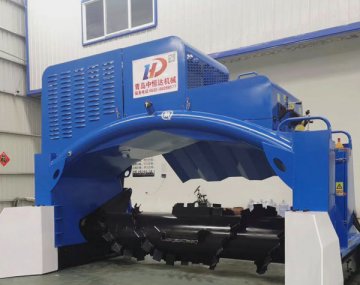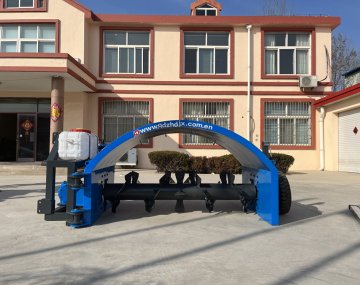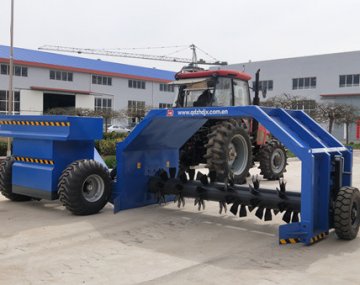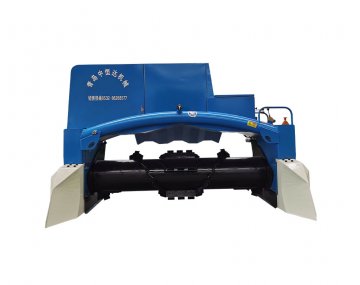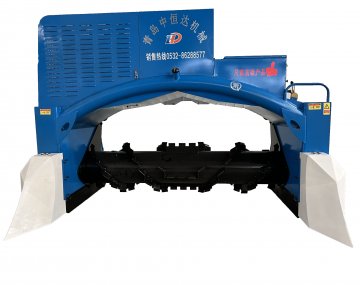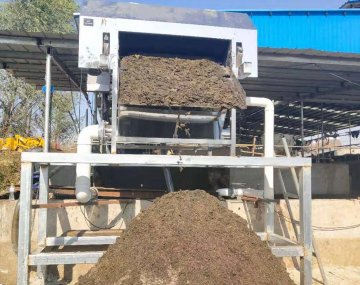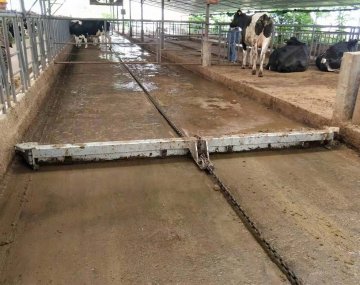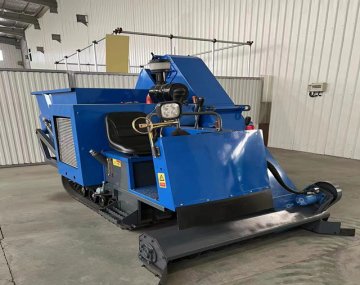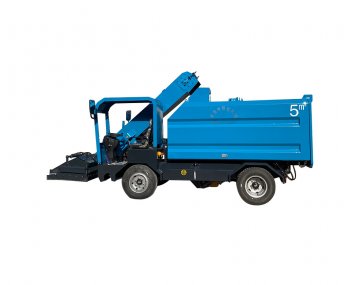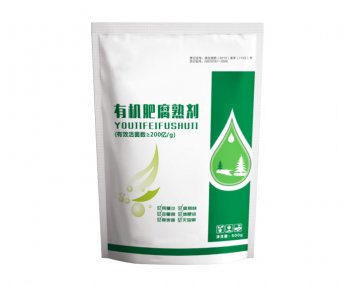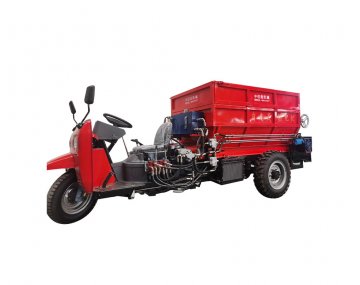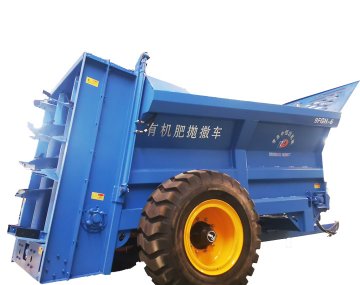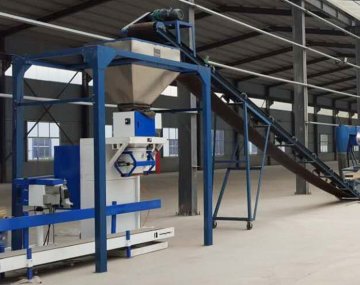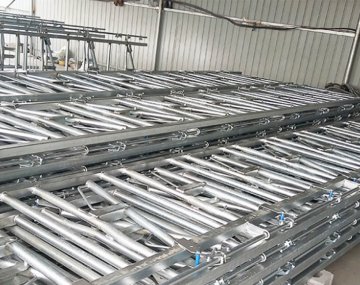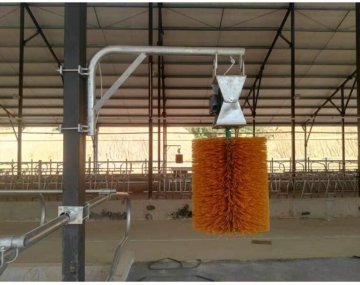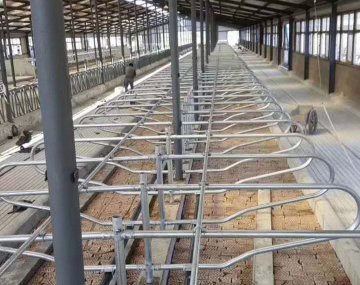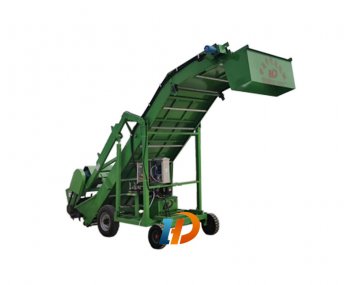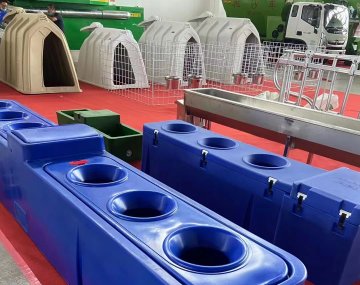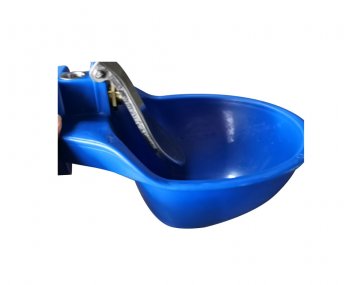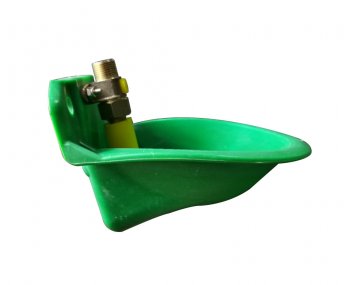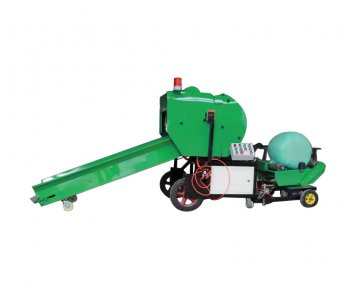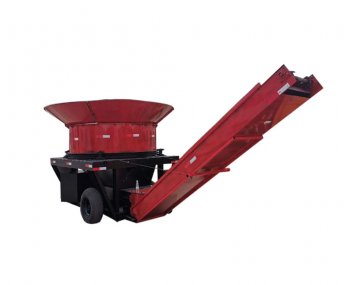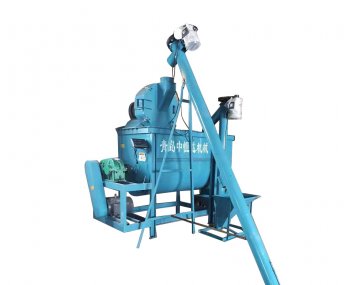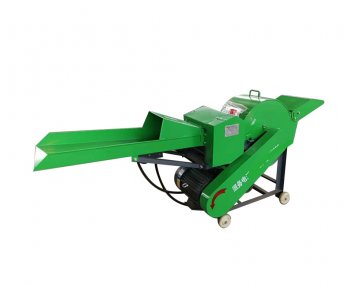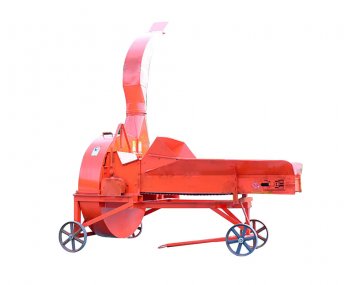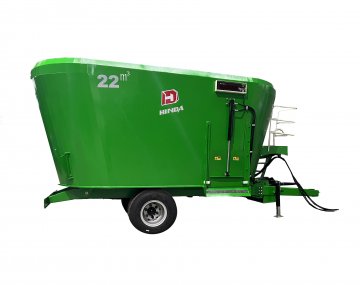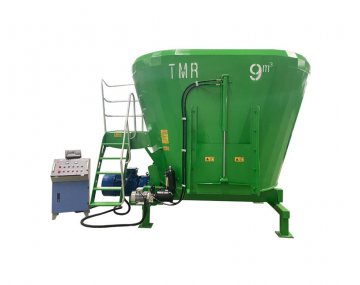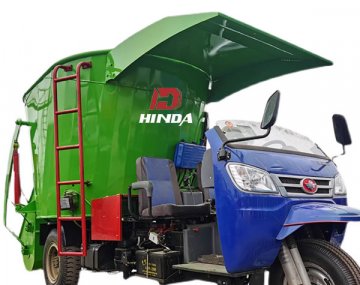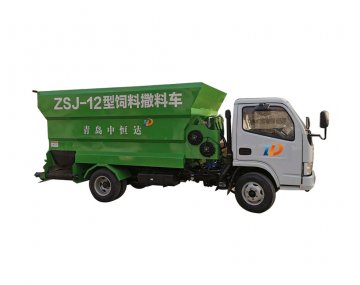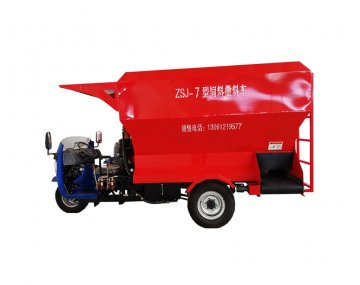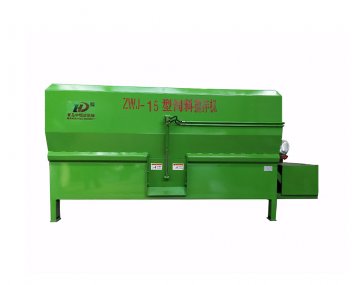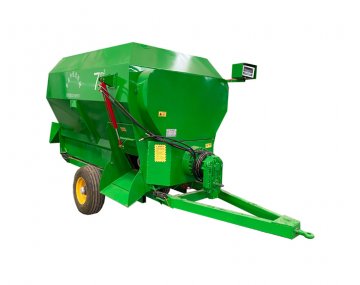Significance of TMR feed mixing equipment
TMR feed mixing equipment is the key equipment for dairy cows to apply the whole mixed ration feeding technology, and it is also an indispensable important facility for the construction of modern, standardized, digitized and large-scale dairy farms.
The TMR feed mixing equipment can automatically weigh and measure all kinds of roughage and concentrate feed, such as green hay, crop straw, silage, etc., and directly cut and rub, mix and scatter feed. TMR feeding technology can ensure that the proportion of feed concentrate and coarse in the diet of dairy cows is suitable for the stable and full mixed diet with the same concentration of various nutrients, which is conducive to improving the performance of dairy cows and avoiding the problems of picky eating and nutritional imbalance.
TMR feed mixing equipment can ensure that all kinds of forage and farm straw plant fiber components are not destroyed, all kinds of feed mix uniformity is high, all kinds of nutrients intake is balanced, in line with the biological digestion characteristics of dairy cows, and improve the palatability of dairy cattle forage feed, dairy cows to maximize the use of all kinds of forage feed nutrition, dairy cows to take full use of all kinds of forage feed.
TMR feed mixing equipment with excellent quality, on the basis of supporting scientific and technical measures, is conducive to the implementation of mechanization of dairy production and large-scale breeding; It is beneficial to promote and guarantee the body health of dairy cows and reduce medical costs. It is beneficial to improve feed utilization rate and milk yield of dairy cows. It is beneficial to reduce the labor intensity and improve the work efficiency. It is helpful to raise the level of production management and improve the raising environment of dairy farm.
TMR feed mixing equipment is suitable for both large and medium-sized dairy farms, as well as rural family scale dairy farms.
Precautions for purchasing TMR feed mixing equipment
When dairy farms purchase TMR feed mixing equipment, they need to consider many factors such as the number of cows in stock and the breeding scale of cows in the future. Generally, for dairy farms with more than 1500 head in storage, it is recommended to purchase two sets of TMR feed mixing equipment with relatively small body volume, or purchase a spare machine in case of failure of TMR feed mixing equipment. In addition, the effective feed mixing capacity of TMR feed mixing equipment is also a factor that must be considered when purchasing TMR feed mixing equipment. Because, when the TMR feed mixing equipment added a variety of forage, to the extent of TMR feed mixing equipment mark volume of 70% ~ 80%, the use efficiency of TMR feed mixing equipment is the highest.
Therefore, when dairy farms purchase TMR feed mixing equipment, it is important to determine the type of TMR feed mixing equipment according to the number of dairy cows and the feed mixing capacity volume of TMR feed mixing equipment.
Different types of TMR feed mixing equipment have different characteristics. Dairy farm purchase feed mixing equipment should master the characteristics of different types of TMR feed mixing equipment, to lay a foundation for the purchase of feed mixing equipment.
Dairy farm purchase TMR feed mixing equipment should also consider the following matters: first, the quality of the equipment selection of production materials and the quality of the main components; Second, is the operation of the equipment stable and reliable? Does the equipment stir evenly and consistently? Third, is the automatic weighing system accurate? Four is the equipment equipped with computer software is scientific and easy to use? Fifth, whether the equipment configuration can meet the needs of cow production? Is routine maintenance convenient? Sixth, is the after-sales service of the equipment timely and good? Aspects including technical training, operational guidance and spare parts supply and breakdown maintenance should be considered in a comprehensive and balanced manner.
Precautions for using TMR feed mixing equipment
1. Familiarize yourself with the rules and be prepared.
(1) TMR feed mixing equipment operators must be professionally trained and qualified full-time TMR equipment operators.
(2) Before using the TMR feed mixing equipment, carefully read and be familiar with the operation instructions; Understand and master the function of all control buttons of TMR feed mixing equipment, and check whether these control button devices can work normally; Review all indication labels on the TMR feed mixing equipment and familiarize yourself with its schematic requirements; Before starting the TMR feed mixing equipment, check that all equipment safety protection devices are working properly.
(3) Prepare other auxiliary equipment for TMR feed mixing equipment. Such as traction machine, silage reclaimer, grass loader, feeding, unloading belt conveyor and other equipment.
2. Safety first, ensure safety.
(1) Before starting the machine, it should first test whether the power oil can meet the operation needs; TMR feed mixing equipment must be started at low speed to preheat for 5 minutes. During the pre-heating process of the TMR feed mixing equipment, the operator will carefully check whether the TMR feed mixing equipment is running normally by means of eyes, ears, ears, hands and noses. After the TMR feed mixing equipment is in normal operation, it can be formally carried out.
(2) It is strictly prohibited to use TMR feed mixing equipment to carry people and cargo; Do not use the TMR feed mixing equipment as a lift or climb into the cutting equipment box. If you need to observe the operation of the TMR feed mixing equipment, use the ladder on the side of the box to observe the situation; No one is allowed to move around the TMR feed mixing equipment or the forage pile or silage pile when the TMR feed mixing equipment is working. It is strictly prohibited to adjust, destroy or remove the protective devices and warning labels on the TMR feed mixing equipment at will; It is strictly prohibited to carry out maintenance and other work during the operation of TMR feed mixing equipment.
(3) The operator of the TMR feed mixing equipment shall not operate the TMR feed mixing equipment after he or she is unwell, overtired, drunk and under medication. When TMR feed mixing equipment operators find or foresee safety hazards in the operation of TMR feed mixing equipment, they should stop the machine in time to eliminate safety hazards.
3. Scientific feeding, stirring evenly.
TMR feed mixing equipment is a common mechanical facility in dairy farms. The application of TMR feed mixing equipment to process and produce the total mixed ration of dairy cows with good quality is conducive to the normal and healthy production of dairy cows. In the process of production of TMR feed mixing equipment, TMR feed mixing and feeding must be carried out carefully in accordance with the operating rules, and the following precautions should be taken:
(1) Pay attention to feed sequence and stirring time of forage feed.
Feeding to the TMR feed mixing equipment shall be carried out according to the TMR formula, following the principle of dry before wet, coarse before fine, light before heavy. Take the vertical TMR feed mixing equipment as an example:
The feeding sequence of various forage feeds is as follows: first, long grass (Chinese clover, alfalfa, swallow grass, etc.); Second, silage feed (silage corn, barley, etc.); Third, byproducts (cottonseed, beet pulp, beer grains, etc.); Four is mixed concentrate class; Fifth, drinking water. The mixing time of forage feed: it is generally 4~6 minutes after the last feed is added. If the long grass forage is not chopped beforehand, the feed mixing time should be as follows:
a. Long grass feed with a total amount of more than 350 kg: the mixer should be turned on when the first feed is added;
b. Long grass feed with a total amount of less than 350 kg: the mixer should not start mixing until all the feed is finished;
c. For the total amount of feed less than 1 ton, the stirring time is 4 minutes;
d. If the total amount of feed is greater than 1 ton, the stirring time should be 6 minutes.
(2) Pay attention to adjusting dry matter ratio of TMR dairy cows' total mixed diet.
When using TMR feed mixing equipment, attention should be paid to the consistent nutrient balance and proportion of dry matter in TMR feed. First, when it is found that the moisture content of forage increases, the amount of forage must be increased in order to keep the proportion of dry matter in TMR total mix diet unchanged. Second, when the volume of TMR forage changes or the remaining grass changes after feeding, it may be the dry matter content of the forage changes. For this reason, TMR total mix ration should be adjusted by adjusting the volume of forage feed, rather than just adjusting the weight to determine the amount of TMR total mix ration for dairy cows. Similarly, in order to adjust the body condition of cows, cows are sometimes given diets with nutrient concentrations above or below the production level, so that the amount of forage feed for cows needs to be determined by adjusting the volume of the TMR total mix diet.
(3) Overload use of TMR feed mixing equipment is strictly prohibited.
The maximum capacity of the TMR feed mixing equipment, that is, the loading of various forage feeds, shall not exceed 80% of the total capacity specified by the TMR feed mixing equipment. To ensure that all kinds of feed can be in the TMR feed mixing equipment barrier-free circulation mixing. If the TMR feed mixing equipment is overloaded, there will be no room for circulating mixing of various feeds, which will not only affect the mixing uniformity of the TMR feed mixing equipment, but also make all kinds of forage feeds overpiled on the auger, increasing the operating load of the auger, and easy to break the transmission chain and other faults. If the TMR feed mixing equipment is overloaded for a long time, it may cause damage to the whole TMR feed mixing equipment.
4. Carefully test the mixing quality.
In order to ensure the mixing quality of dairy cows' TMR total mixed rations stirred by TMR feed mixing equipment, the following methods can be used to test the mixing quality of dairy cows' TMR total mixed rations.
5. Regular maintenance and timely maintenance.
TMR feed mixing equipment has to perform feed mixing work for a long time every day. Therefore, the assembly parts of TMR feed mixing equipment will have different degrees of wear and tear. In order not to affect the normal operation of the TMR feed mixing equipment, the operators of the TMR feed mixing equipment should maintain regularly and replace the worn parts of the feed mixing equipment in time.
In order not to affect the normal maintenance of TMR feed mixing equipment, it is necessary to prepare all kinds of vulnerable parts of TMR feed mixing equipment. Such as blades, chains, conveyor belts and so on.
The vulnerable parts of TMR feed mixing equipment, such as blades, should be adjusted and screwed once a week, and replaced once every two to three months; Air filter, oil filter and other common parts, every 400 hours to replace; Lifting hydraulic oil and transmission gear oil, every 800 hours to replace; Lubricate the butter once a day before starting work; Every day to check the transmission chain and conveyor belt tightness, timely adjustment and lubrication.
If it is found that the TMR feed mixing equipment needs to extend the stirring time to achieve the stirring effect, it indicates that the blade of the TMR feed mixing equipment needs to be adjusted or replaced. Under normal conditions, the distance between the moving blade and the fixed blade of the TMR feed mixing equipment should be less than 1 mm. If there is wear, the gap between the two blades increases, it is necessary to adjust or replace in time. It should be specifically pointed out that when adjusting or replacing the blade, it is necessary to ensure that the TMR feed mixing equipment is in the shutdown state before adjusting or replacing the blade to ensure personal safety.
TMR feed stirring equipment is mainly composed of power plant, reducer, transmission device, stirring device and stirring box and other device components. In the stirring process of various feeds, the continuous movement between the rotating auger and various forage materials will produce strong force and reaction force. When the force exceeds the design allowed range, it is possible to cause equipment damage and mechanical failure. Therefore, proper operation of TMR feed mixing equipment is very important. Otherwise, it is easy to cause the transmission chain and sprocket of TMR feed mixing equipment; Auger, auger bearing; Gear, transmission and conveyor belt and other equipment accessories are damaged. The failure of TMR feed mixing equipment will not only increase the maintenance cost and shorten the service life of the equipment, but also delay the normal feeding of cows and affect the normal production of cows.
TMR feed mixing equipment is required to sprinkle and distribute uniformly when discharging milk for cows. When spreading the material, let the discharging belt run first, and then open the discharging door; To stop unloading, first close the unloading door, and then stop the unloading belt running. This can prevent the accumulation of grass at the unloading door and affect the normal distribution of material. After the TMR feed mixing equipment has scattered the material cloth, the cows should push the grass in time after feeding for a period of time, so as to facilitate the cows to feed continuously. Prevent cows from being unable to feed and competing with each other.
After the TMR feed mixing equipment is finished, the TMR feed mixing equipment shall be parked smoothly, the hand brake shall be pulled up to prevent its own movement, and the TMR equipment which should be lowered to the lowest position shall be placed safely according to the requirements, so as to meet the non-working requirements of no-load, air pressure and vacancy, so as to extend the normal working time of the TMR feed mixing equipment.

